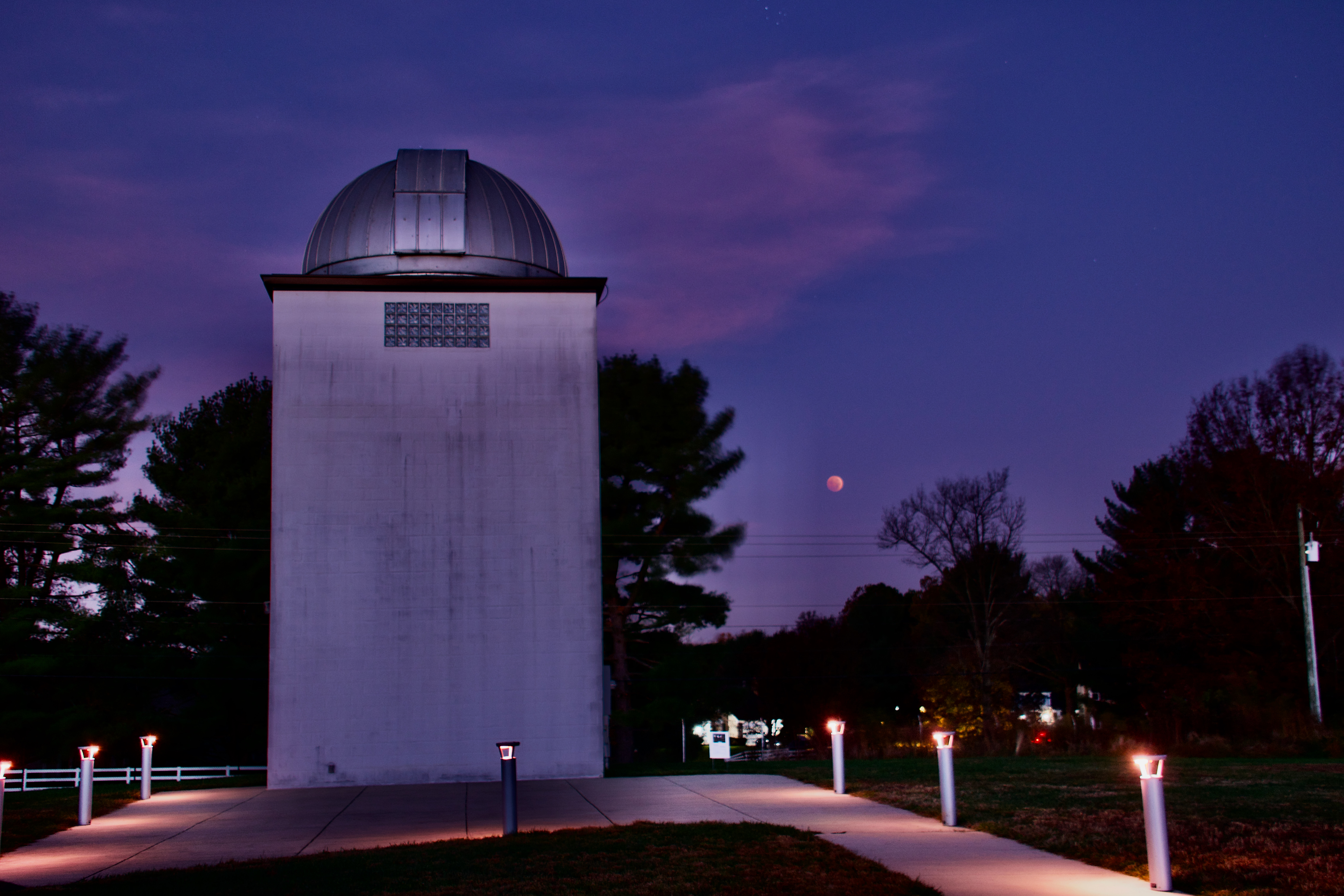A family takes turns peering through s Schmidt-Cassegrain style telescope to examine colors of double stars.
CTWenks_0324-FamilyShot 2.JPG
CTWenks_0196AlanTeachingAug3Group
CTWenks_LunarEclipse.JPG
CTWenks_MarsPleiadesVisoitorCloseup7293.JPG
CTWenks-RATOLunarEclipse.jpeg
<1b>By Christina Tyler Wenks
<2b> The Connection
“Every visit is ‘WOW!’ You can look at the universe,” said Shrishti Chhajlani, a Georgetown University nursing student.
More than 4,000 people visited Observatory Park this year, doubling last year’s attendance and quadrupling 2016 figures.
Observatory Park offers free sky viewing on Friday nights, weather permitting, plus Fairfax County Park Authority’s Parktakes classes, and other learning opportunities. Requests for special programs are growing.
 More than 100 people turned out on Nov. 8 to Observatory Park to witness the lunar eclipse.
More than 100 people turned out on Nov. 8 to Observatory Park to witness the lunar eclipse.
“I’d like to increase astronomy programs across the county, but if given a choice to sign up for a class elsewhere or at the observatory, the public will choose the observatory,” said Tammy Schwab, Fairfax County Park Authority education and outreach manager.
Fairfax County relies on a local organization to manage technical equipment and the rising popularity. “We rely on Analemma Society for support and training of volunteers because they are the experts,” Schwab said.
During 2022, about 20 Analemma Society volunteers provided astronomy classes and operated telescopes for more than 130 events and more than 1,650 service hours.
“Our ultimate goal is to inform the public about the history and value of astronomical development that leads to science-based decisions that continue to improve our lives,” said Charles Olin, who founded Analemma Society in the 1990s to develop Observatory Park in partnership with Fairfax County.
Observatory Park’s history is distinct from neighboring Turner Farm and includes shared missions decades ago with the NIKE Missile Sites and the Defense Mapping Agency Herndon Site that became central to Global Positioning System development and navigation technologies. A former radar pedestal is now the Remote Access 
Outdoor night-sky programs started in 2003, but the Roll Top Building’s 2016 completion was a game changer. The Roll-Top is half classroom and half-observatory, where the roof opens providing sky access to mounted telescopes. Walls block headlights and wind, providing a darker, warmer space on cold nights.
“Now that we have the classroom, we can do regular programs. We go right from the classroom to telescopes, and we don’t have the setup time of hauling telescopes outdoors,” explained Analemma Society’s Jeffrey Kretsch, who works with FCPA to accommodate increasing program demand.
Ken Randell of Fairfax called Observatory Park an inexpensive family date. Others call the historic site and knowledgeable volunteers a local treasure.
For more information about events, classes, volunteering and more, visit analemma.org.
